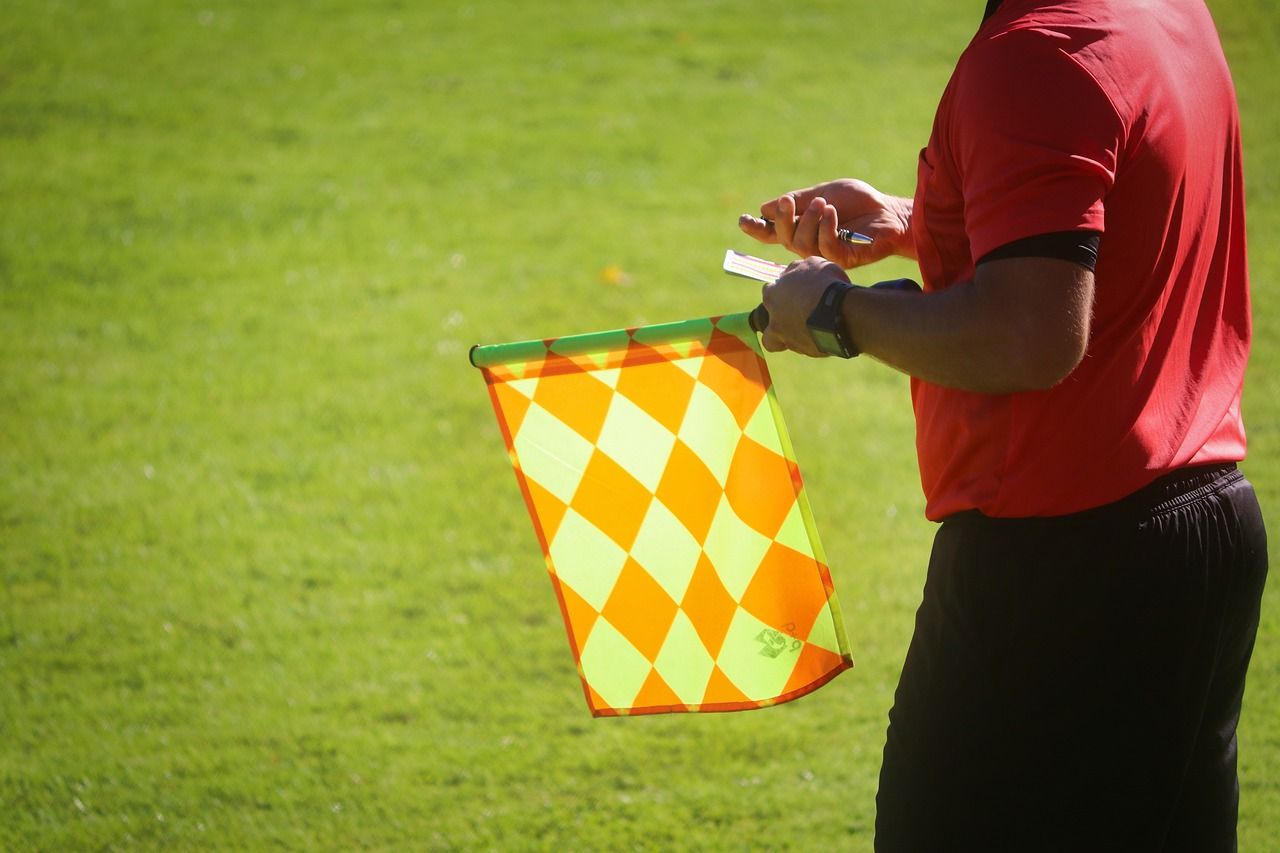The Premier League is finally responding to calls for change with the adoption of semi-automated offside technology (SAOT) for the 2024-25 season. This significant advancement aims to address some of the most contentious issues in the sport - the accuracy and time taken to make offside decisions. After unanimous agreement from Premier League clubs, the technology is set to be implemented following one of the autumn international breaks, potentially as early as September or as late as November. It marks a decisive step by the league to enhance the accuracy of offside decisions while significantly reducing the average length of a VAR (Video Assistant Referee) review by about 30 seconds.
Semi-automated offside technology is not entirely new to the world of football. It has been successfully used in competitions such as the UEFA Champions League, Serie A, and at the most recent men's and women's World Cups. However, its introduction to one of the most watched football leagues globally demonstrates the Premier League's commitment to leveraging technology for better game management. The decision to adopt SAOT follows extensive criticism of the current VAR system for perceived inaccuracies and the duration of decision-making, which detracts from the overall match experience for fans and players alike.
The Decision to Adopt SAOT

Image by Alexander Fox | PlaNet Fox from Pixabay
Unanimous Approval by Premier League Clubs
The introduction of semi-automated offside technology (SAOT) in the Premier League has received unanimous approval from the clubs, marking a significant step towards improving the accuracy and speed of offside decisions starting from the 2024-25 season. This collective agreement highlights the league's commitment to using technology to enhance the game's fairness and spectator experience. The technology is expected to significantly reduce the average duration of VAR checks for offside, which is a welcome development for both fans and teams alike.
The System's Prior Use in Other Competitions
SAOT is not new to the world of football; it has been successfully implemented in other major football competitions, including the Champions League and Serie A, as well as at the most recent men's and women's World Cups. These implementations have provided valuable insights into the technology's effectiveness and reliability, making a compelling case for its adoption in the Premier League. The prior use of SAOT in such high-profile tournaments has demonstrated its capability to deliver quick and accurate offside decisions, an aspect that the Premier League is keen to integrate into its matches starting from the 2024-25 season.
Technical Overview of Semi-Automated Offside Technology (SAOT)

Image by Alexander Fox | PlaNet Fox from Pixabay
How SAOT Works
SAOT operates through a sophisticated system involving 12 cameras installed around the stadium, which track the ball and players, monitoring 29 data points on each player. This setup allows for a precise determination of players' positions in real-time. Unlike the traditional VAR system, which relies heavily on manual intervention, SAOT automates the process, significantly reducing the time taken to arrive at offside decisions. Importantly, the technology does not necessarily require a chip inside the ball, a feature used in some competitions to further enhance accuracy.
Expected Impact on Decision Timings
The introduction of SAOT is expected to dramatically decrease the time taken for offside decisions, with predictions suggesting a reduction of approximately 30 seconds on average per decision. This improvement will not only speed up the game but also reduce the uncertainties and frustrations frequently associated with prolonged VAR checks. The technology's ability to provide almost instant decisions is a crucial advancement, aligning with the Premier League's objective to maintain the flow of the game while ensuring the accuracy of offside calls.
Backup Measures and Limitations
Despite the high reliability of SAOT, the Premier League (PL) has outlined backup measures to address any unforeseen technical issues that may arise. The current VAR system, utilizing Hawk-Eye for offside decisions, will serve as a fallback option, ensuring that the decision-making process is not compromised in the event of SAOT failure. It's important to note that while SAOT significantly enhances the accuracy and speed of offside decisions, it does not entirely eliminate the role of on-field referees and VAR officials, who will still need to make subjective calls on aspects such as interference in play.
Will SAOT Actually Work?

"Kevin De Bruyne celebrating Belgium's 2–1 win over Brazil" by Эдгар Брещанов is licensed under CC BY-SA 3.0.
Speeding up VAR Calls
One of the primary benefits expected from the implementation of SAOT is the significant reduction in the time taken to review VAR calls for potential offsides. Trials of the system have shown that the average duration of a VAR decision could be shortened by roughly 30 to 31 seconds. This improvement is attributed to the technology's capability to automatically calculate the positions of players in real-time, using camera footage and tracking software, thereby eliminating the need for VAR teams to manually draw lines and assess player positions. These enhancements are crucial in maintaining the flow of the game and minimizing disruptions caused by lengthy video reviews.
Enhancing Accuracy and Fan Experience
The accuracy of offside decisions is another area where SAOT is expected to make a significant difference. By automating the process of detecting offsides, the technology aims to reduce human errors that have led to controversial decisions in the past. This move not only increases the integrity of the sport but also boosts confidence among teams, officials, and fans regarding the fairness of decisions made during matches.
Additionally, SAOT promises to enhance the in-stadium experience for supporters by providing high-quality broadcast graphics that clearly depict offside situations. This feature addresses the issue of fans feeling left out of the loop during VAR checks, ensuring they remain engaged and informed throughout the match.
Potential Areas of Concern
Despite its advantages, the introduction of SAOT is not without its challenges. One of the main concerns is the technology's ability to accurately identify player positions in "edge cases," where multiple players are clustered in a small area, potentially obstructing the camera's view. Ensuring the system can handle such complex scenarios without compromising accuracy is essential for its success.
Training match officials to adeptly use this new technology and integrating it smoothly into the existing VAR framework are also pivotal. Officials must be comfortable and proficient with SAOT to maintain consistency in decision-making and uphold the technology's credibility.
Implementation Timeline and Preparation

"Auf weiter Flur / Referee" by CottonIJoe is licensed under CC BY-NC-SA 2.0.
Pilot Testing and Analysis
Prior to its official introduction, SAOT has undergone extensive testing and analysis to assess its efficiency and accuracy. This phase included trials at major international tournaments and simulations during current Premier League seasons, which confirmed the technology's potential to enhance decision-making processes and reduce the time taken for VAR reviews.
Introduction Schedule
The technology is slated for introduction after one of the autumn international breaks in the 2024-25 season, with September or October being the targeted window. This strategic timing allows for additional testing and adjustments based on feedback from pilot implementations, ensuring the system is fully operational and effective for its Premier League debut.
Training for Officials and Stadium Preparations
A comprehensive training program for match officials is an integral part of the preparation for SAOT's launch. This initiative aims to familiarize referees with the new system's operations, ensuring they are confident in interpreting and applying the technology during matches. Additionally, stadiums will undergo necessary upgrades and installations, including the setup of the required camera and tracking infrastructure, to support the seamless operation of SAOT.
The anticipation surrounding the introduction of semi-automated offside technology reflects the Premier League's desire to leveraging innovative solutions to enhance the sport. While challenges are expected, the potential benefits in terms of speed, accuracy, and fan experience offer a promising outlook for the future of soccer technology.






